![]()
|
James
Broadhurst & Sons |
Location and period of operation:
|
James Broadhurst |
Longton |
c. 1860 |
c. 1870 |
|
James Broadhurst |
Fenton |
c. 1870 |
1894 |
|
James
Broadhurst & Sons |
Fenton |
1894 |
1922 |
|
James
Broadhurst & Sons |
Fenton |
1922 |
1939 |
|
James
Broadhurst & Sons |
Fenton |
1939 |
1959 |
|
James
Broadhurst & Sons |
Fenton |
1959 |
1984 |
|
Earthenware manufacturer at the Crown Works, Longton and then from 1870 at the Portland Pottery, Fenton, Stoke-on-Trent, England.
|
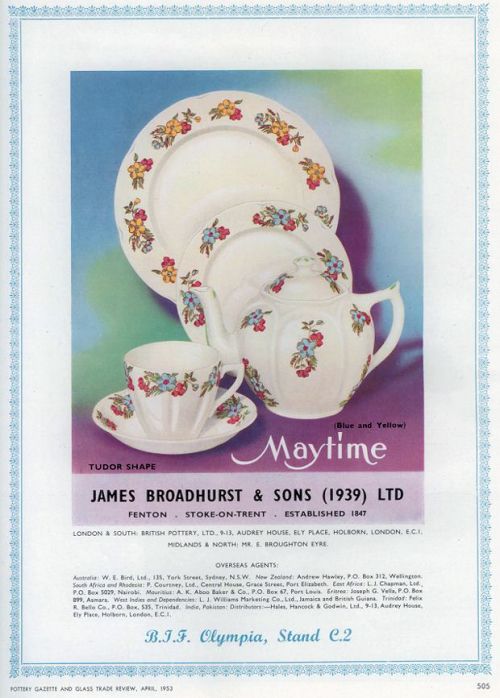 James Broadhurst & Sons (1939) Ltd Fenton . Stoke-on-Trent . Established 1847 Pottery Gazette and Glass Trade Review - April 1953 |
 James Broadhurst & Sons Ltd Established 1847 Earthenware manufacturers Portland Pottery . Fenton . Stoke-on-Trent Pottery Gazette Reference Book - 1960 |
The "established 1847" refers to the earlier company of Hampson, Broadhurst and Broadhurst
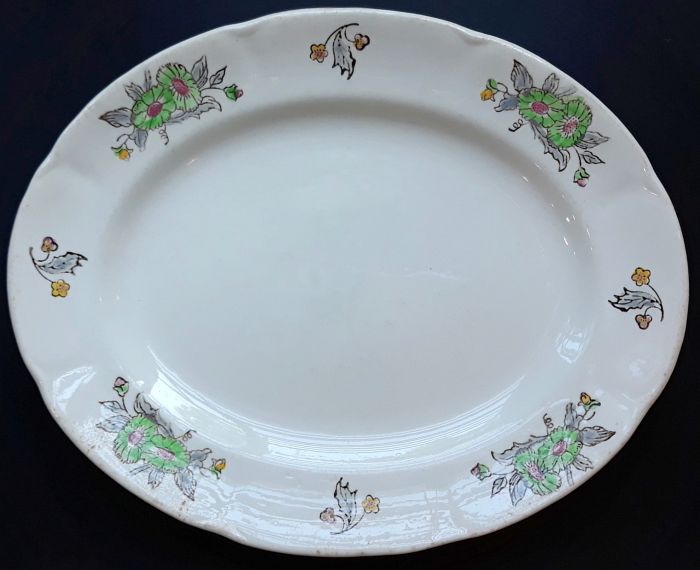 platter in the Windsor pattern - printed outline, hand coloured |
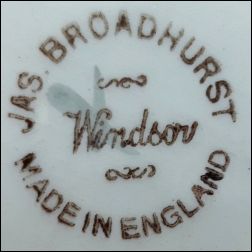 JAS. BROADHURST Windsor Made in England mark probably introduced in the 1950s |
photos courtesy: Lucy Williams
Kathie Winkle
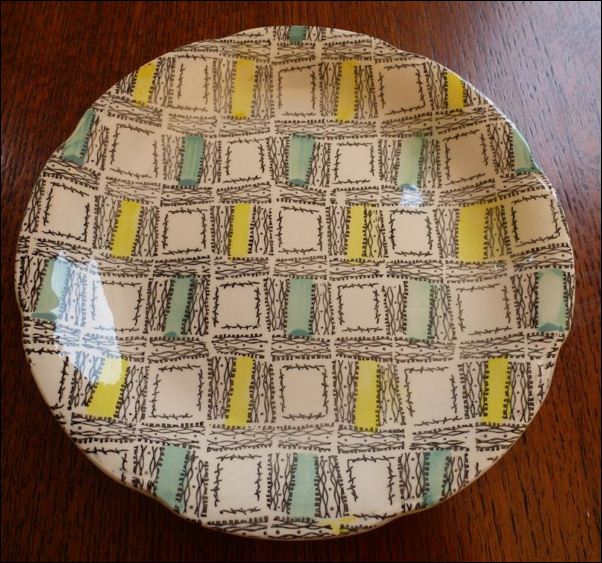
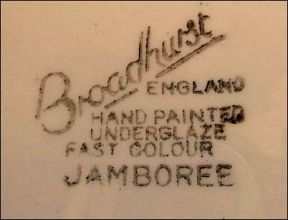
plate in the Jamboree pattern
by Kathie Winkle
printed pattern, hand coloured
design from c.1960


plate in the Lynden pattern
by Kathie Winkle
c. 1958-64
photos courtesy: Hélène Giguère
 Rushstone by Kathie Winkle
|
 Concord by Kathie Winkle
|
| Kathie Winkle - pottery
designer Kathie Winkle began her pottery career at Shorter and Son, Stoke-on-Trent, where she was trained as a paintress. She joined James Broadhurst & Sons Ltd., Portland Pottery, Fenton around 1950, initially as a paintress, but by 1958 she was producing her own designs. She soon became responsible for all Broadhurst’s pattern designs from then until the mid 1970s. The removal of post-war restrictions on the designers created a demand for new styles of kitchenware and Broadhursts were able to use Kathie Winkle’s ideas to meet this new market.
During her time as a designer Kathie Winkle produced over 100 patterns. The shapes of the ware did not change. Simple forms proved a more suitable background for frequent pattern changes. It was also much cheaper to change the surface pattern rather than the shape of the pot and so a standard shape range was used. In addition, only a small number of colours, usually three or less, were used on each piece to reduce the cost of production. The fewer the strokes of a paintress’s pencil (brush), the better.
Her name appears on the backstamp from 1964 and became the registered trademark for Broadhursts’ wares. It was also used from then on any pre-Winkle designs which were re-issued. This backstamp was used until around 1978 when she changed role within the company.
|
Initials and marks used on ware for identification:
|
Note: the pottery company of James Beech & Son also used the initials J B & S (and J B & Son) - their mark included a crowned Stafford knot with these initials.
J B & Son this is NOT the mark of Broadhurst - it is James Beech & Son |
J. B.
c. 1860-70
J. B. & S.
1870-1922
J. B. & S. Ltd
1922+

BROADHURST
ENGLAND
impressed mark
post war (c. 1945+) included the name in full

c. 1958-64 |

c. 1964-78 |
|
Kathie Winkle was producing her own designs by 1958. However her name didn't appear on the backstamp until 1964 - it then became the registered trademark for Broadhursts’ wares. The Winkle backstamp was also used from then on any pre-Winkle designs which were re-issued. This backstamp was used until around 1978 when she changed role within the company. |

Broadhurst
Staffordshire
Est. 1847
Ironstone
England


marks with the phrase 'Dishwasher Proof' are generally 1955 onwards

Jas Broadhurst
& Sons Ltd
England
printed mark in use from 1957


Broadhurst
England
printed mark in use from 1961 onward
often including the pattern name
 J. Broadhurst Staffordshire England Constable Series |
 Broadhurst Staffordshire England 1977 Queen's Silver Jubilee |
Questions, comments, contributions? email: Steve Birks